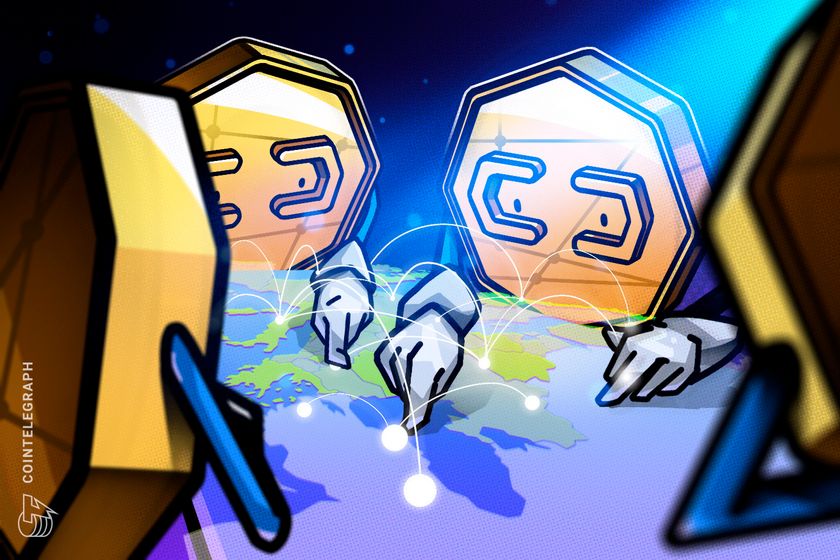Cotino, A Storyliving by Disney Community entry
The Walt Disney Company
Most Disney-philes are aware of Disney’s planned community, Golden Oak, nestled in the heart of Walt Disney World in Orlando, Florida. But now a new Disney community is popping up in the Coachella Valley. Cotino is the first Storyliving by Disney community to welcome residents to move in and enjoy the Disney lifestyle, but not in the way most people may be expecting. Around Cotino, Mickey Mouse isn’t plastered on walls, and there’s no sign of a storybook castle anywhere in the valley. But Disney is certain that this second jump into real estate will benefit the business and fans.
“We always love to look at where our guests and our fans are. One of the things we really saw was this emerging trend of lifestyle communities, and they’re particularly strong among baby boomers and Gen X,” Claire Bilby, senior vice president of Storyliving by Disney, told me after taking a tour of Cotino. “There’s a lot of affinity in those age groups because the baby boomers were the last generation that grew up with Walt [Disney].”
It should come as no surprise that Disney is building its first planned community in Rancho Mirage, since it was a retreat for Walt Disney. In fact, Becky Cline, director of the Walt Disney Archives, shared with me that one of the main reasons the Palm Springs airport exists is so Disney could fly in his private jet from Burbank to Palm Springs and not have to drive to his second home.
What is Cotinto, a Storyliving by Disney community?
Contino Shea Homes model home
The Walt Disney Company
What makes Cotino and future Storyliving by Disney communities unique is that it’s essentially a licensing deal between Disney and the land developers. “We don’t own the land,” shared Bilby. “We have a developer partner, and we work with builders. Disney’s role is that we write the story with [Walt Disney] Imagineers of what that community’s story is going to be. Each community will be unique.”
Homes in the neighborhood are developed by Davidson Communities, Shea Homes and Woodbridge Pacific Group. Prices start around $1.3 million for a two-bedroom, two-and-a-half-bathroom home.
“This is not a themed home,” explains Bilby. “We’ve done nice little soft touches because it’s where [residents] are going to live 365 days a year.” These subtle Disney details may include a themed throw pillow in a bedroom or a piece of art on a hallway wall, but the homes are not overtly Disney-fied. The first phase of development includes more than 300 homes. Plans include building more than 1,900 residential units. Besides single-family homes, Cotino will have an area dedicated to those ages 55 and older and condominiums.
“The way we look at real estate is very prescriptive. We really will cater to everybody. The Rancho Mirage demographic tends to be more in that baby boomer and Gen X. A lot of it is second homes right now, but I think some of these will become primary [homes],” says Bilby. She also mentioned that there are condos and other types of homes coming in future phases. “It’s really learning about what the market is driving as far as the need is concerned.”
What amenities are available for residents?
Contino Bay and The Artisan Club
MATT BEARD PHOTOGRAPHY INC
Residents who have purchased homes can also opt into the voluntary Artisan Club, which includes access to various amenities. “[Disney] will build the amenities and own and operate those,” explained Bilby.
Buying into the Artisan Club includes access to a table-service restaurant called Architects Fork, an outdoor bar called Plot Twist, a wellness center, outdoor sports courts, and a creative studio for art classes and guest speakers. Members also have access to Cotino Bay, a massive water feature from Crystal Lagoons, where members can swim, kayak, and enjoy the man-made beach.
The Artisan Club’s amenities are the only areas within Cotino that residents will see a heavier influence of Disney movies and characters. For instance, Artisan Club members can gather in or rent out the Parr House, a life-size recreation of the home from The Incredibles 2, where the Parr family lived. Additionally, inside Architects Fork, members can see blueprints of some Disneyland attractions like “it’s a small world” on the walls.
Currently, Artisan Club Membership is only available to those who have purchased a home in Cotino. There are two different membership tiers, and both have a one-time initiation fee of $20,000. The real difference between tiers is who can come with you to enjoy the amenities and other additional expenses.
For the less expensive Artisan Club Resident Membership, the account can include one member, a domestic partner, and eligible children. The annual dues and annual food and beverage minimum for this tier are $11,000 and $1,000, respectively. Then there’s the Artisan Club Resident Extended Membership, which includes access for more family members, including grandparents and grandchildren, with $19,000 in annual dues and a $2,000 annual food and beverage spend.
What’s next for Storyliving by Disney?
Aerial rendering of Asteria, a new Storyliving by Disney community recently announced in North Carolina. (Disney) ©Disney
The Walt Disney Company
Even though Cotino is not fully complete, Disney is already developing a second Storyliving by Disney community just outside of Raleigh, North Carolina. The second community, Asteria, has plans for about 4,000 residents and is being built in collaboration with DMB Development. Sales are anticipated to begin in 2027.
Source: https://www.forbes.com/sites/megandubois/2025/11/01/disney-is-banking-on-real-estate-with-its-first-storyliving-by-disney-community-in-the-coachella-valley/


